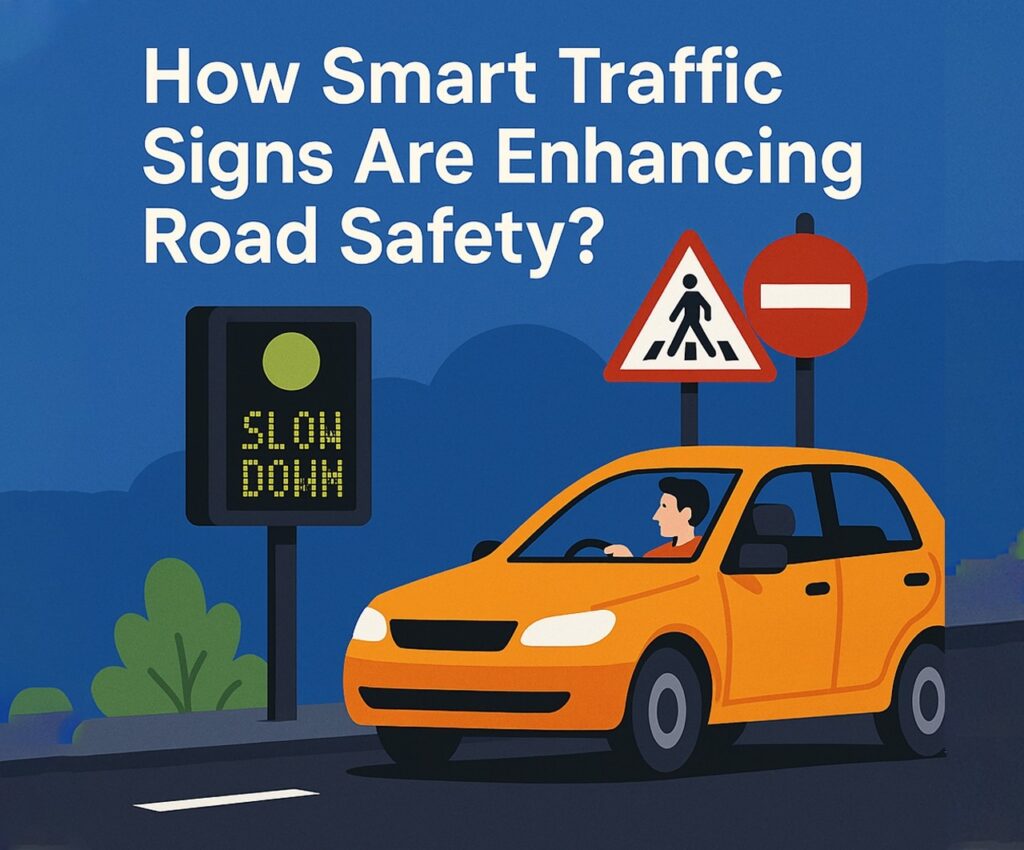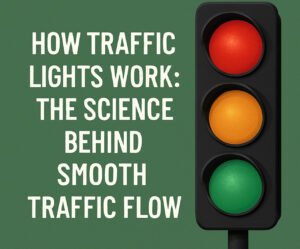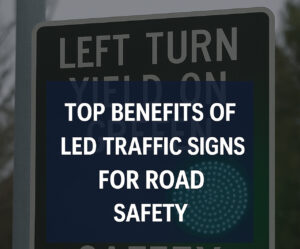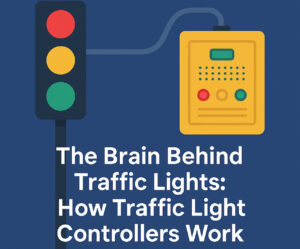In today’s fast-moving world, road safety is more important than ever. With increasing urban traffic, traditional traffic signs and signals are struggling to keep up. That’s where the smart traffic signal, smart traffic signal control system, and smart traffic signal system come in. These advanced technologies are transforming the way traffic is managed and significantly improving safety on roads around the world. Know more..
What Are Smart Traffic Signals?
A smart traffic signal is an intelligent device that adjusts in real time to changing traffic conditions. Unlike traditional signals with fixed timing, smart systems use sensors, cameras, and data analytics to make immediate decisions about light changes. These signals can adapt to current conditions, such as high traffic volume, pedestrian crossings, emergency vehicles, or weather disruptions.
The Technology Behind the System
A smart traffic signal system integrates several key technologies:
- Sensors and Detectors: These monitor vehicle flow, speed, and volume.
- AI and Machine Learning: Algorithms analyze real-time data to optimize traffic light cycles.
- Wireless Communication: Ensures seamless connection between intersections and central traffic control centers.
- Cloud-Based Management: Data is collected and processed in the cloud, allowing remote access and updates.
Together, these tools allow the smart traffic signal control system to respond to dynamic changes in traffic patterns—reducing delays, preventing accidents, and maintaining steady traffic flow.
Benefits for Road Safety
One of the biggest advantages of deploying a smart traffic signal system is its ability to reduce accidents. Traditional lights don’t adjust for real-time behavior—if there’s a sudden influx of cars or a stalled vehicle, congestion builds and risks rise. Smart systems can react immediately by adjusting signal timings or alerting authorities.
Here are a few ways these systems improve road safety:
- Reduced Collisions at Intersections: Real-time adjustments decrease the likelihood of red-light running.
- Improved Pedestrian Safety: Sensors detect foot traffic and extend crossing times when needed.
- Emergency Vehicle Priority: Smart systems recognize emergency vehicles and adjust lights to clear their path.
- Adaptive Speed Management: Coordinated signals reduce the need for hard braking, a major cause of rear-end collisions.
Urban Planning Integration
Urban planners are integrating the smart traffic signal control system into their infrastructure upgrades. Cities like Los Angeles, Singapore, and Stockholm are already deploying thousands of smart signals that work in harmony with traffic cameras, public transit schedules, and pedestrian networks.
In Los Angeles, for instance, the Automated Traffic Surveillance and Control system manages over 4,000 intersections. It uses a comprehensive smart traffic signal system to reduce traffic congestion and improve safety outcomes, especially during peak hours.
Environmental and Economic Impact
Beyond safety, smart traffic signal systems help the environment and economy. By minimizing idle time and optimizing vehicle flow, these systems:
- Reduce fuel consumption
- Lower greenhouse gas emissions
- Decrease the cost of traffic-related delays
Cities adopting a smart traffic signal control system often see a significant drop in traffic jams and fuel usage. This contributes to cleaner air and improved public health outcomes, especially in densely populated areas.
Real-World Success Stories
Singapore has led the way in deploying an island-wide smart traffic signal system. Using AI, the city adjusts signals based on vehicle and pedestrian movements. Their adaptive traffic signal system has reduced average travel time by up to 15% and improved pedestrian safety significantly.
Pittsburgh, USA, piloted a smart traffic signal control system known as Surtrac. This system uses decentralized, real-time adaptive signal control and has cut travel times by 26%, wait times by 41%, and emissions by 21%.
Smart Traffic Signals and Autonomous Vehicles
The rise of autonomous vehicles increases the importance of smart infrastructure. A smart traffic signal can communicate directly with these vehicles, helping them navigate intersections safely and efficiently. This V2I (vehicle-to-infrastructure) communication is a crucial part of future smart cities.
A smart traffic signal control system provides real-time updates to autonomous vehicles, allowing them to anticipate signal changes, adjust speed, or change routes. This coordination significantly reduces accident risk and helps AVs operate seamlessly alongside human drivers.
Overcoming Implementation Challenges
Despite their benefits, there are challenges in deploying a smart traffic signal system:
- High Upfront Costs: Equipment, installation, and training require significant investment.
- Data Privacy: Systems collect large volumes of data, raising concerns about surveillance and misuse.
- Maintenance: Sensors and communication networks require ongoing maintenance.
- Standardization: Different cities and vendors use various technologies, which can cause compatibility issues.
However, many cities are finding that the long-term savings in time, fuel, and healthcare costs far outweigh the initial expenses.
Public Education and Policy Support
For these systems to be successful, public awareness is essential. Drivers and pedestrians must understand how smart systems work and how to interact with them. Governments can support adoption by funding infrastructure upgrades and developing policies that promote safety, data security, and transparency.
Laws encouraging V2I communication, data sharing between vehicles and traffic systems, and cross-agency coordination will accelerate the effectiveness of the smart traffic signal control system.
Looking Ahead
In the near future, smart traffic signal systems will become the norm in urban areas. We can expect:
- Nationwide deployments in major cities
- Integration with ride-share and delivery services
- Personalized navigation updates for drivers via mobile apps
- Expanded pedestrian and cyclist considerations
As cities grow, so will the need for smarter infrastructure. A smart traffic signal isn’t just a convenience—it’s a cornerstone of safer, more efficient, and more sustainable urban life.
Final Thoughts
The smart traffic signal, smart traffic signal control system, and smart traffic signal system are no longer future concepts—they’re active, working solutions that are saving lives, reducing emissions, and making cities more livable. As adoption spreads, expect to see fewer accidents, smoother commutes, and more time where it really matters: out of traffic and back into life.





